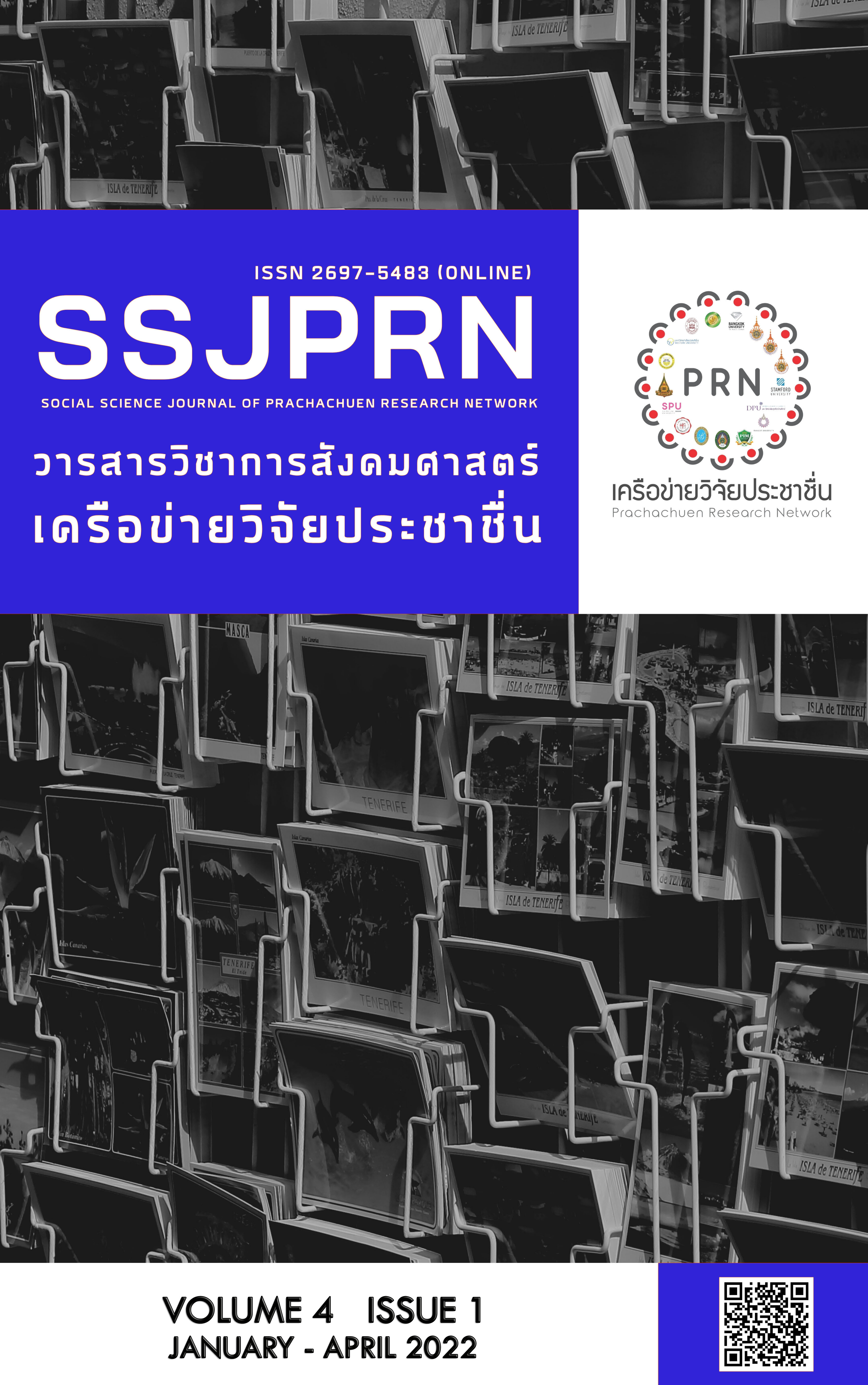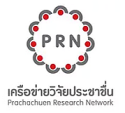รูปแบบการโฆษณาแฝงโซเชียลเกมบนเทคโนโลยีบล็อกเชน ผ่านเครือข่ายสังคมออนไลน์เฟซบุ๊กแฟนเพจ
คำสำคัญ:
โฆษณาแฝง , เกมบนเทคโนโลยีบล็อกเชน , สังคมออนไลน์บทคัดย่อ
การวิจัยครั้งนี้มีวัตถุประสงค์เพื่อเปรียบเทียบการตอบสนองต่องานโฆษณาในโซเชียลเกมบนเทคโนโลยีบล็อกเชน ผ่านเครือข่ายสังคมออนไลน์เฟซบุ๊กแฟนเพจ ของผู้บริโภคที่มีลักษณะส่วนบุคคลแตกต่างกัน เปรียบเทียบการตอบสนองต่องานโฆษณาของผู้บริโภคที่มีพฤติกรรมการเล่นโซเชียลเกมบนเทคโนโลยีบล็อกเชน ผ่านเครือข่ายสังคมออนไลน์เฟซบุ๊กแฟนเพจแตกต่างกัน และหาความสัมพันธ์ระหว่างรูปแบบของโฆษณาในเกมกับการตอบสนองต่องานโฆษณาในโซเชียลเกมบนเทคโนโลยีบล็อกเชนผ่านเครือข่ายสังคมออนไลน์เฟซบุ๊กแฟนเพจของผู้บริโภค กลุ่มประชากร เนื่องจากผู้วิจัยไม่ทราบจำนวนประชากรที่แน่นอนจึงใช้การคำนวณกลุ่มตัวอย่างโดยใช้สูตรวิธีการคำนวณของ W.G. Cochran (1953) ที่ระดับความเชื่อมั่นร้อยละ 95 ที่ความคลาดเคลื่อนร้อยละ ± 5 ได้ขนาดกลุ่มตัวอย่างที่ต้องเก็บข้อมูลคือ 385 คน แต่ผู้ศึกษาทำการเก็บข้อมูลจำนวน 400 คน เพื่อความสะดวกในการวิเคราะห์ผล โดยใช้วิธีเลือกกลุ่มตัวอย่าง เฉพาะผู้ที่เล่นโซเชียลเกมบนเทคโนโลยีบล็อกเชน ผ่านเครือข่ายสังคมออนไลน์เฟซบุ๊กแฟนเพจเท่านั้น
ผลการศึกษาพบว่า ลักษณะส่วนบุคคลที่แตกต่างกัน คือ เพศที่แตกต่างกันมีการตอบสนองต่อโฆษณาแตกต่างกันในด้านความรู้ ความชอบ ความชอบเป็นพิเศษ ความเชื่อมั่น และความต้องการซื้อ ด้านพฤติกรรมการเล่นโซเชียลเกมที่แตกต่างกัน ได้แก่ กลุ่มตัวอย่างที่มีช่วงเวลาเล่นโซเชียลเกม และเหตุผลที่เล่นโซเชียลเกมแตกต่างกันมีการตอบสนองต่อโฆษณาในโซเชียลเกมแตกต่างกันในทุกด้าน คือ ด้านการรับรู้ ด้านความรู้ ด้านความชอบ ด้านความชอบเป็นพิเศษ และด้านความต้องการซื้อ อย่างมีนัยสำคัญ 0.05 และรูปแบบการโฆษณาแฝงในเกม มีผลต่อการตอบสนองต่อโฆษณา โดยส่งผลต่อการตอบสนองต่อโฆษณา ด้านการรับรู้มากที่สุด รูปแบบโฆษณาที่โดดเด่น เห็นชัดเจน มีผลต่อการตอบสนองต่อโฆษณาในทุกด้าน ในส่วนโฆษณาที่กลมกลืนกับเนื้อหาในเกม มีผลต่อการตอบสนองต่อโฆษณาในด้าน ภาพรวม ด้านการรับรู้ ด้านความรู้ ด้านความชอบ และด้านความชอบพิเศษ อย่างมีนัยสำคัญ 0.05
เอกสารอ้างอิง
กรกรก ละออ. (2560). โฆษณาแฝงบนสื่อวิดีโอออนไลน์ที่ส่งผลต่อการตัดสินใจซื้อของผู้บริโภคกรณีศึกษา Facebook Fan Page. (สารนิพนธ์ปริญญาการจัดการมหาบัณฑิต, มหาวิทยาลัยมหิดล).
กฤษฏางค์ มั่นกิจ. (2556). กลยุทธ์การนำเสนอตราสินค้าผ่านเนื้อหาในเกมบนสมาร์ทโฟน. (วิทยานิพนธ์ปริญญามหาบัณฑิต, มหาวิทยาลัยเทคโนโลยีสุรนารี).
คณาพจน์ วงษ์เฉลียง. (2560). ประสิทธิผลของการโฆษณาสินค้าบนเกมออนไลน์. (การค้นคว้าอิสระวารสารศาสตร์มหาบัณฑิต, มหาวิทยาลัยธรรมศาสตร์).
จันจิรา แก้วขวัญ. (2561). พฤติกรรมการใช้เครือข่ายสังคมออนไลน์อย่างเหมาะสมของนักเรียนมัธยมศึกษา อำเภอเมืองสงขลา จังหวัดสงขลา. (วิทยานิพนธ์ปริญญามหาบัณฑิต, มหาวิทยาลัยศิลปากร).
พงษ์นรินทร์ ปิดจัตุรัส. (2554). การรับรู้ และพฤติกรรมการซื้อของผู้ชมที่มีต่อโฆษณาแฝงในรายการละครซิทคอม/เกมโชว์ กรณีศึกษารายการระเบิดเถิดเทิง ทางสถานีวิทยุโทรทัศน์กองทัพบกช่อง 5. วารสารวิชาการบัณฑิตวิทยาลัยสวนดุสิต (มนุษย์ศาสตร์และสังคมศาสตร์), 7(2), 31-42.
ศิริวรรณ เสรีรัตน์ และคณะ. (2552). การบริหารการตลาดยุคใหม่ Marketing Management. กรุงเทพมหานคร: สำนักพิมพ์ Diamond In Business World.
Alec Sandar. (2019). Global Games Market Forecast 2022. Retrieved from https://www.bluemoongame.com/global-games-market-forecast-2022/
Chang, Y., Yan, J., Zhang, S., & Luo, J. (2010). Online in-game advertising effect: Examining the influence of a match between games and advertising. Journal of Interactive Advertising, 12(14), 20-25.
Cochran, W.G. (1953). Sampling Techiques. New York: John Wiley & Sons. Inc.
Dean Takahashi. (2019). Newzoo's forecast for global gamers in 2021. Retrieved from https://venturebeat.com/2021/07/04/newzoo-game-market-will-hit-200b-in-2024/
Hootsuite. (2020). Digital 2020 October Global Statshot Report. Retrieved from https://m.facebook.com/TheDigitalTips/photos/a.1721246778189531/2720601451587387/?type=3
Kotler, P. (1997). Marketing Management Analysis, Planning, Implication, and Control (9th ed.). NewJersey: Prentice-Hall.
Lavidge, R., & Steiner, T. (1961). A i’vlodel for predictive measurements of advertising effectiveness. Journal of Marketing, 12(5), 10-15.
Michael Rose. (2019). Facebook Gaming continued to grow in Thailand. Retrieved from https://web.facebook.com/fbgaminghome/blog/facebook-gaming-continues-to-grow-in-thailand-standalone-gaming-app-now-available-on-google-play?locale=th_TH&_rdc=1&_rdr
Peer Power. (2020). อุตสาหกรรม “เกมไทย” 2020. Retrieved from https://www.peerpower.co.th/blog/investor/thai-game-industry/
Syracuse University. (2018). E-sports Viewers in the United States 2021. Retrieved from https://www.slideshare.net/Activatelnc/activate-tech-media-outlook-2018
Verberckmoes, S., Poels, K., Dens, N., Herrewijn, L. & Pelsmacker, P. D. (2016). When and why is perceived congruity important for in-game advertising infantasy games?. Computers in Human Behavior, 64(2016), 871–880.
Yang, D. (2006). Using Web-based Resources to Enhance Teaching and Learning. New York: McGraw Hill.
ดาวน์โหลด
เผยแพร่แล้ว
รูปแบบการอ้างอิง
ฉบับ
ประเภทบทความ
สัญญาอนุญาต
ลิขสิทธิ์ (c) 2022 วารสารวิชาการสังคมศาสตร์เครือข่ายวิจัยประชาชื่น

อนุญาตภายใต้เงื่อนไข Creative Commons Attribution-NonCommercial-NoDerivatives 4.0 International License.
บทความที่ได้รับการตีพิมพ์เป็นลิขสิทธิ์ของวารสารวิชาการสังคมศาสตร์เครือข่ายวิจัยประชาชื่น







